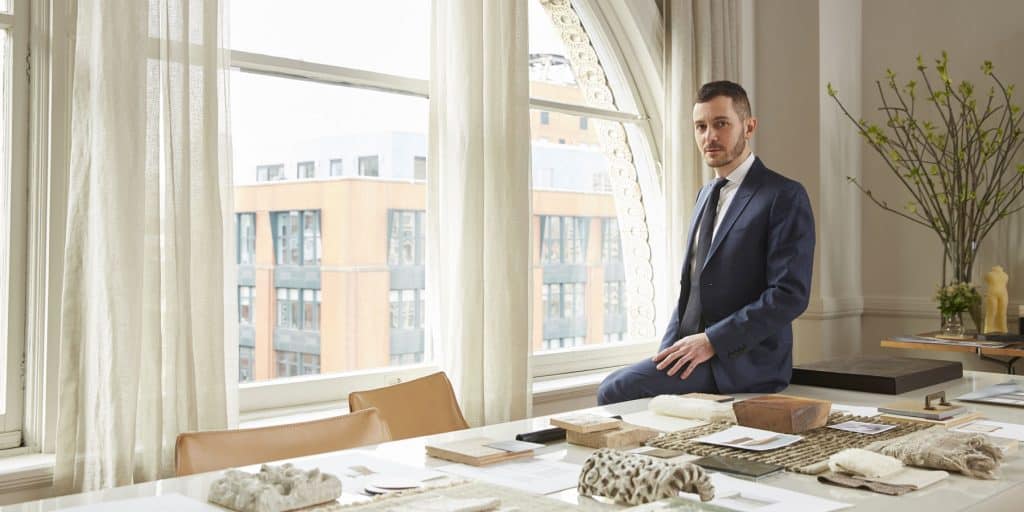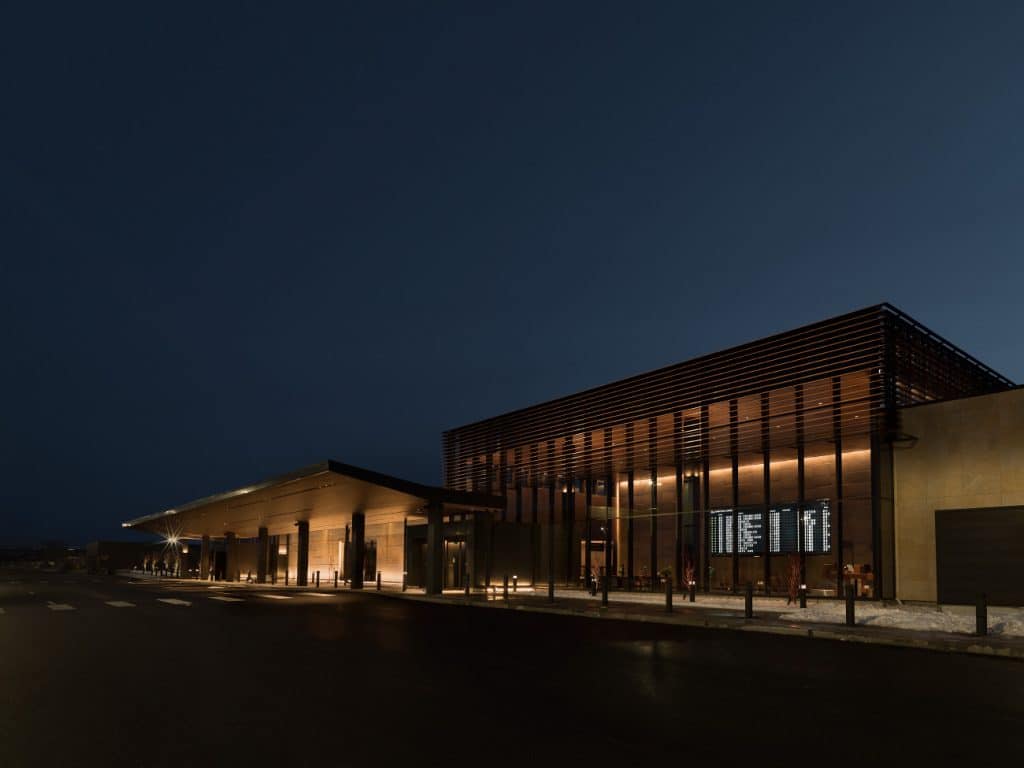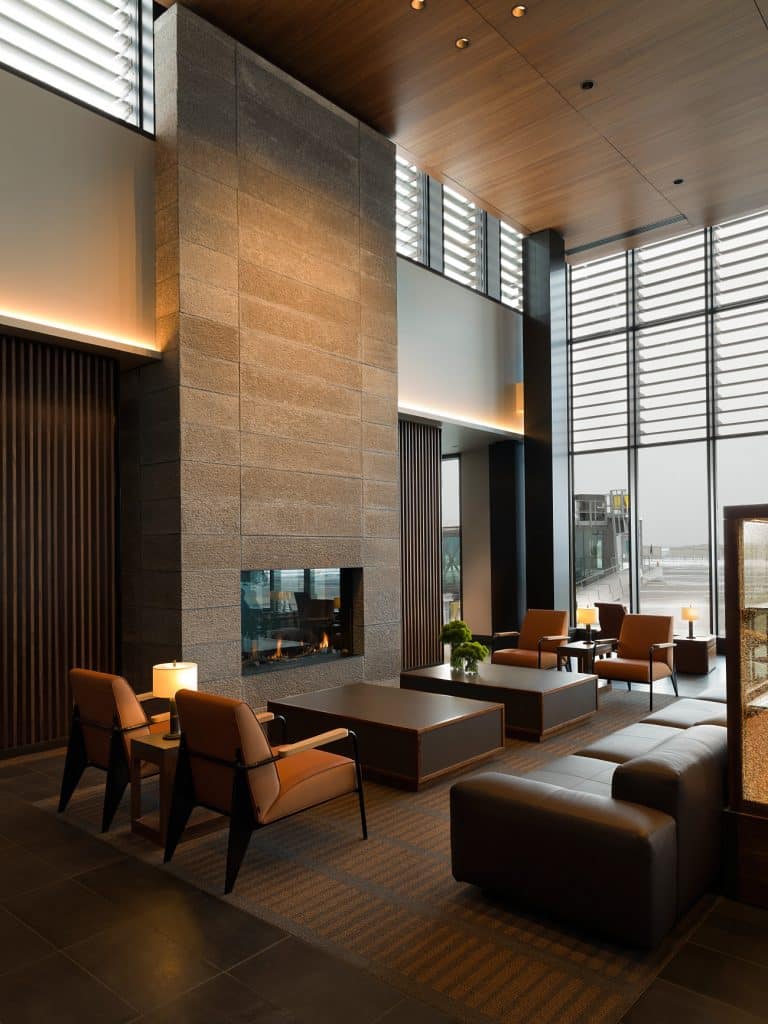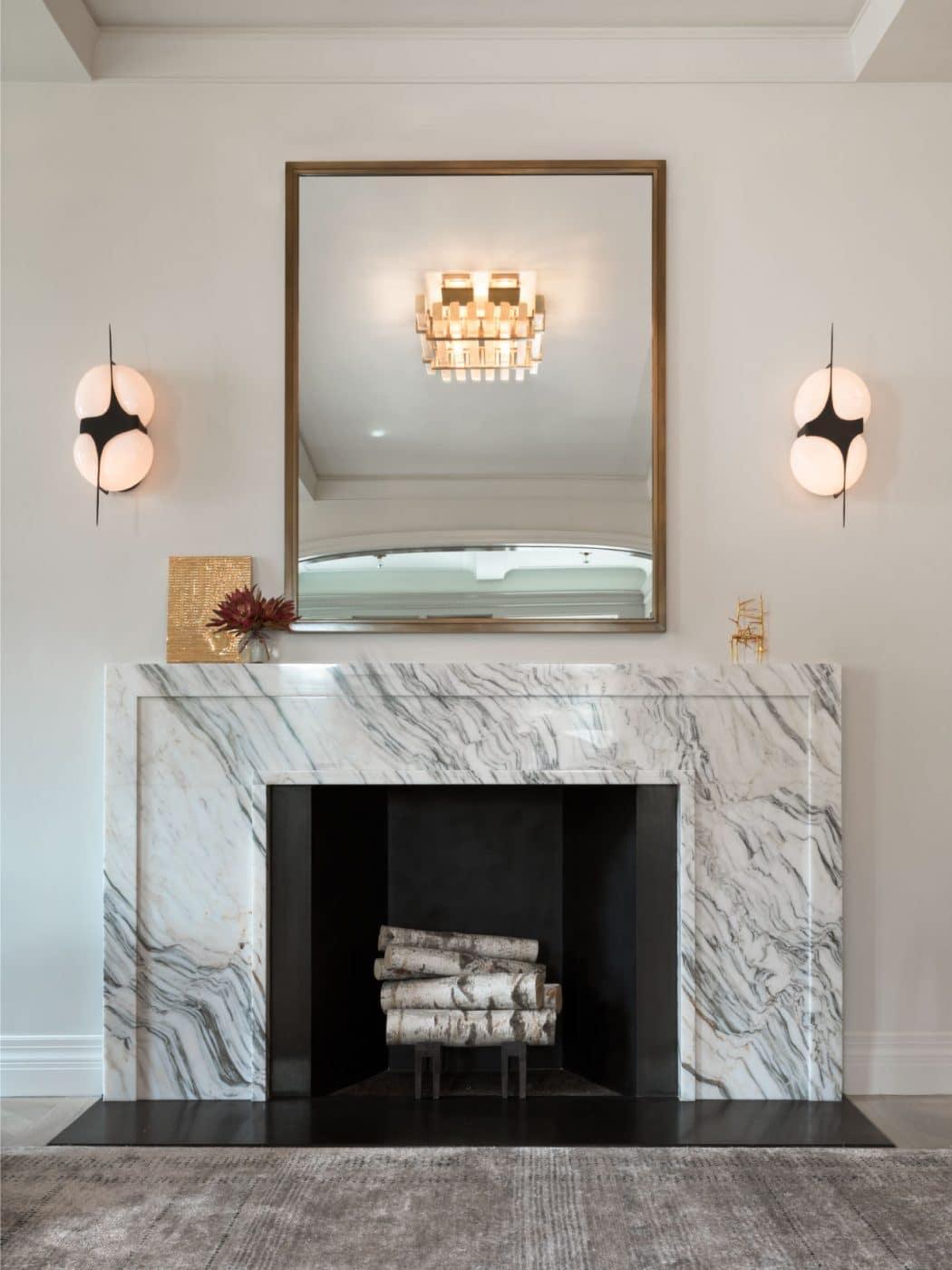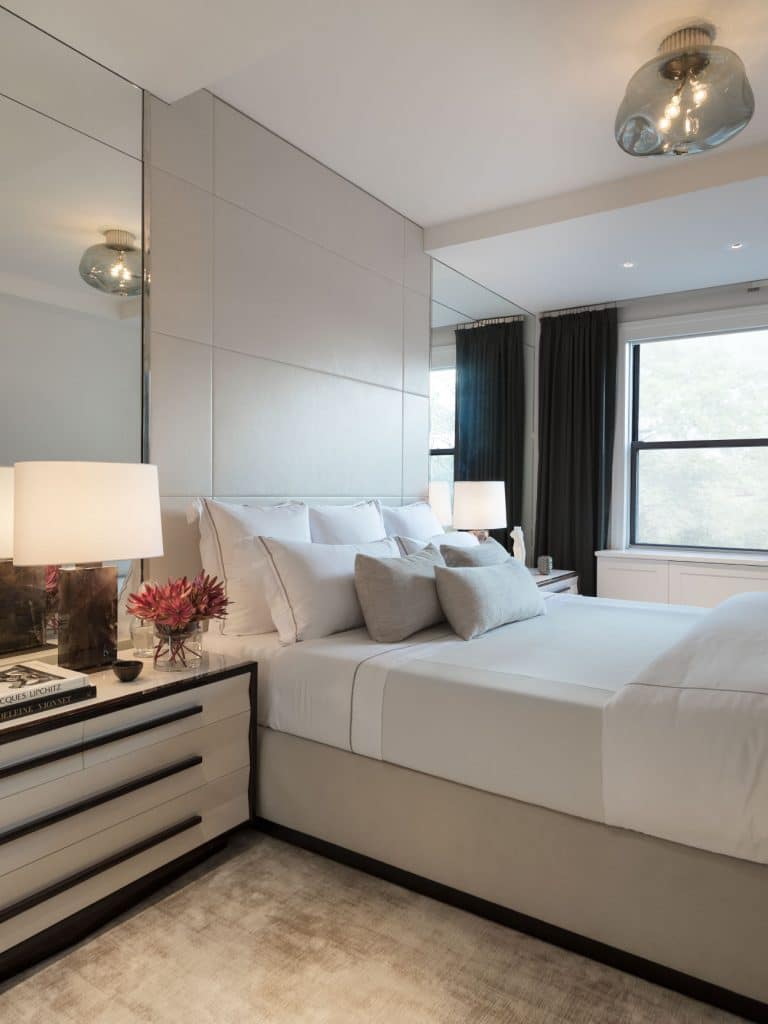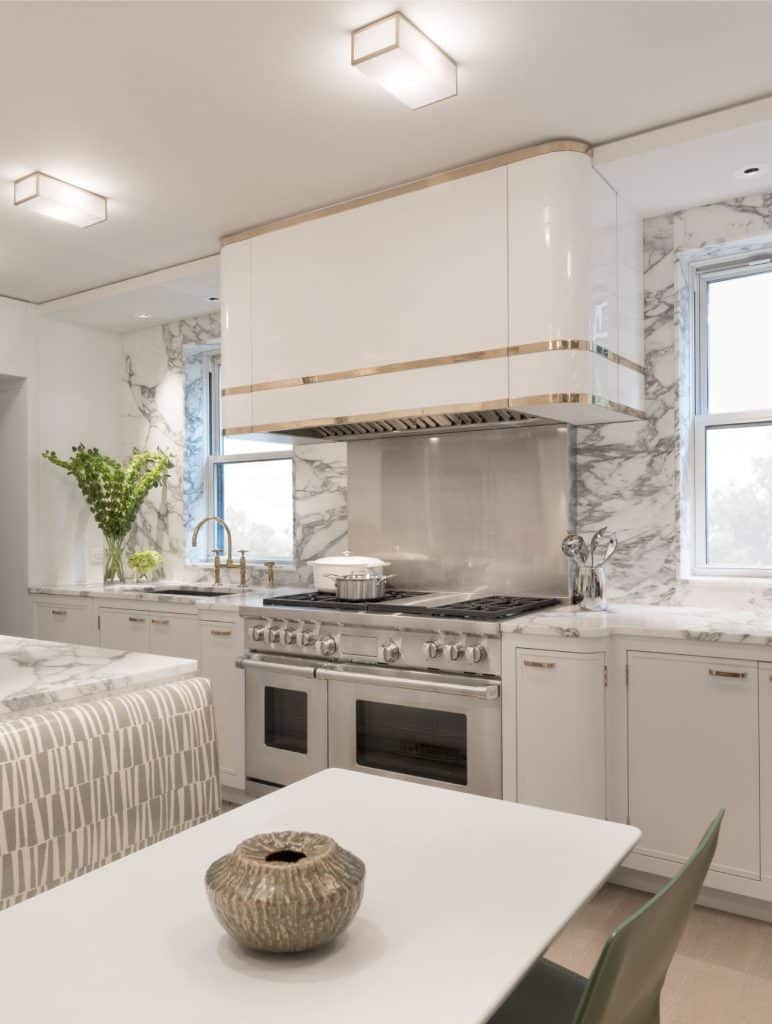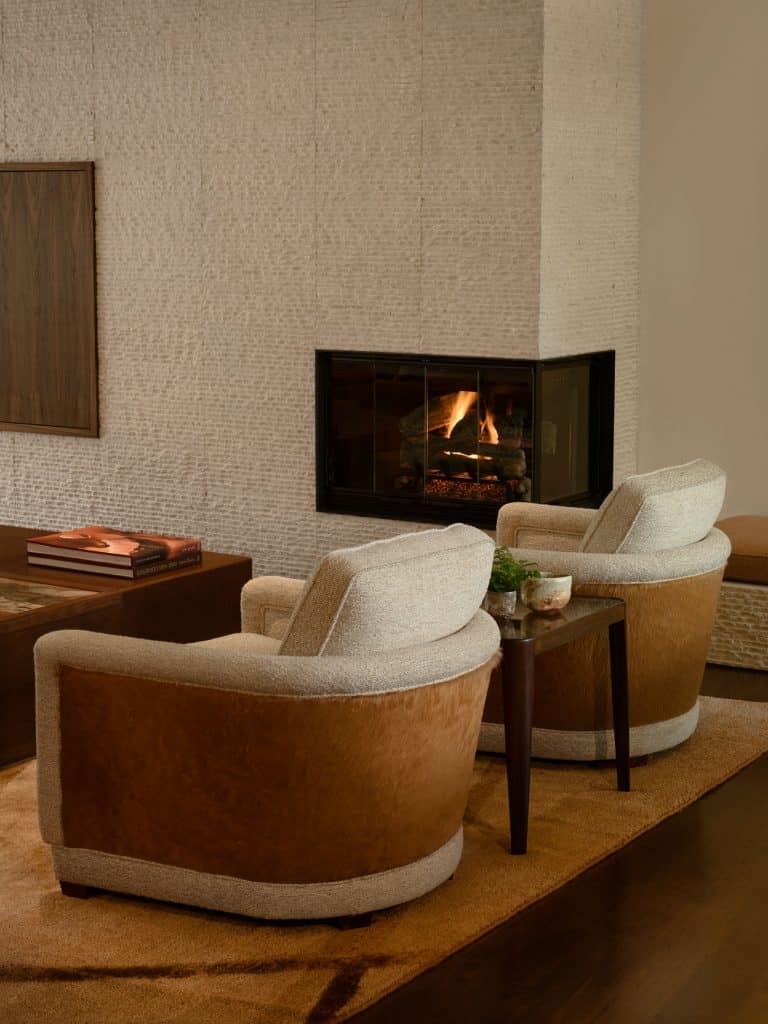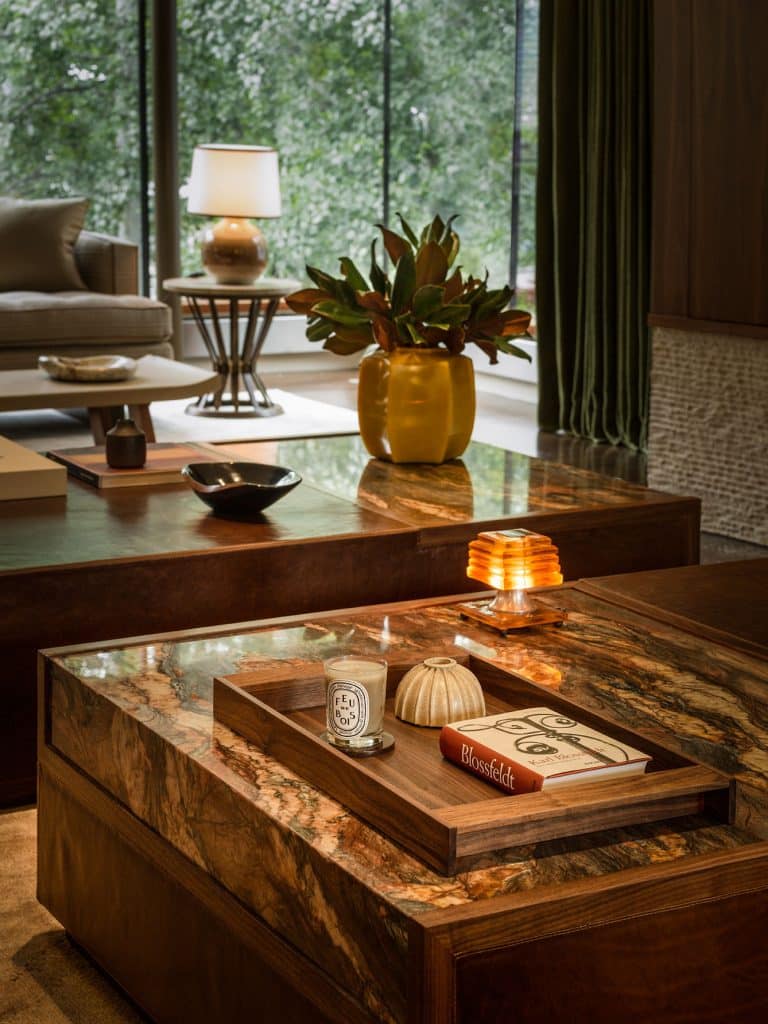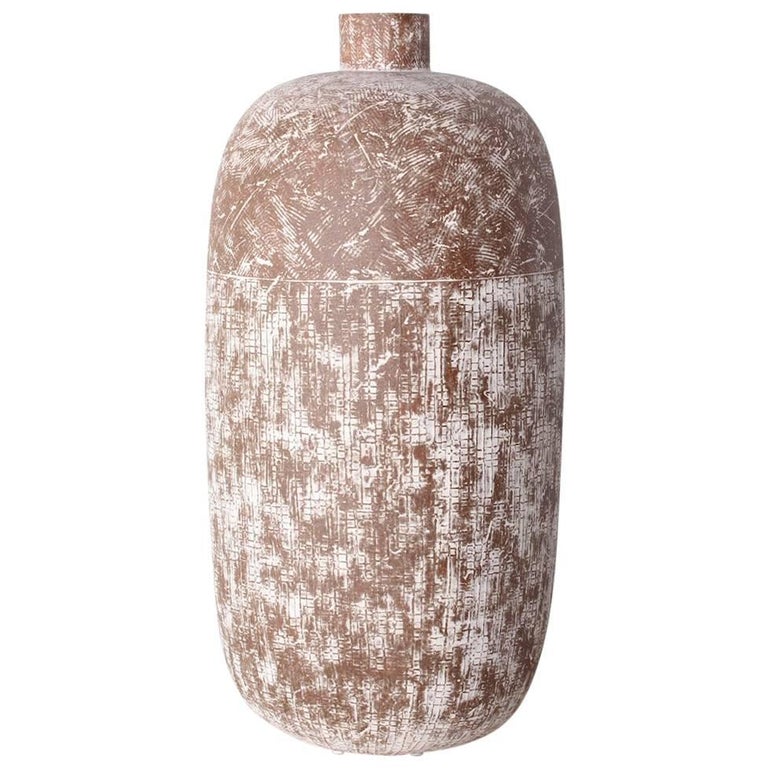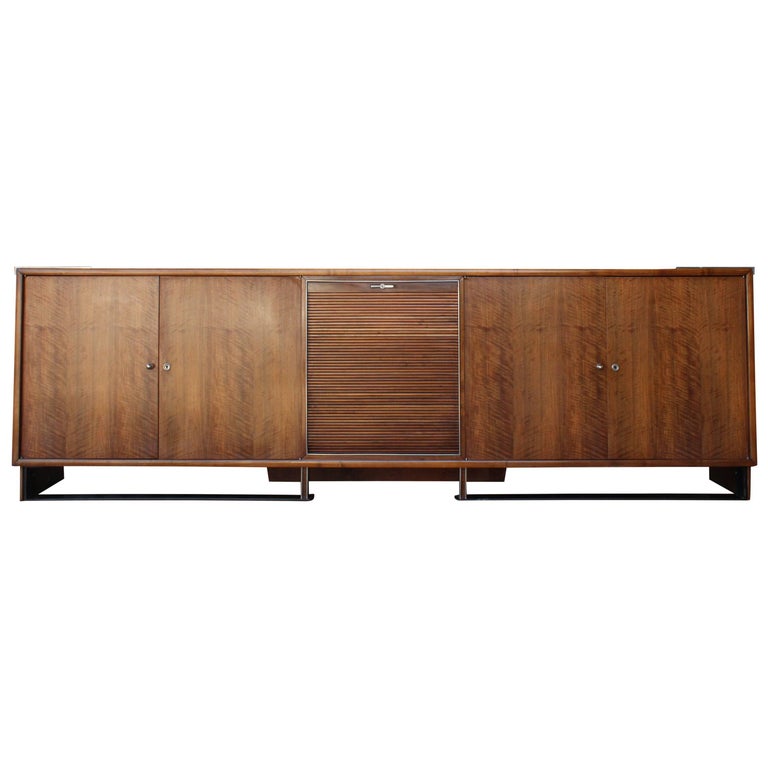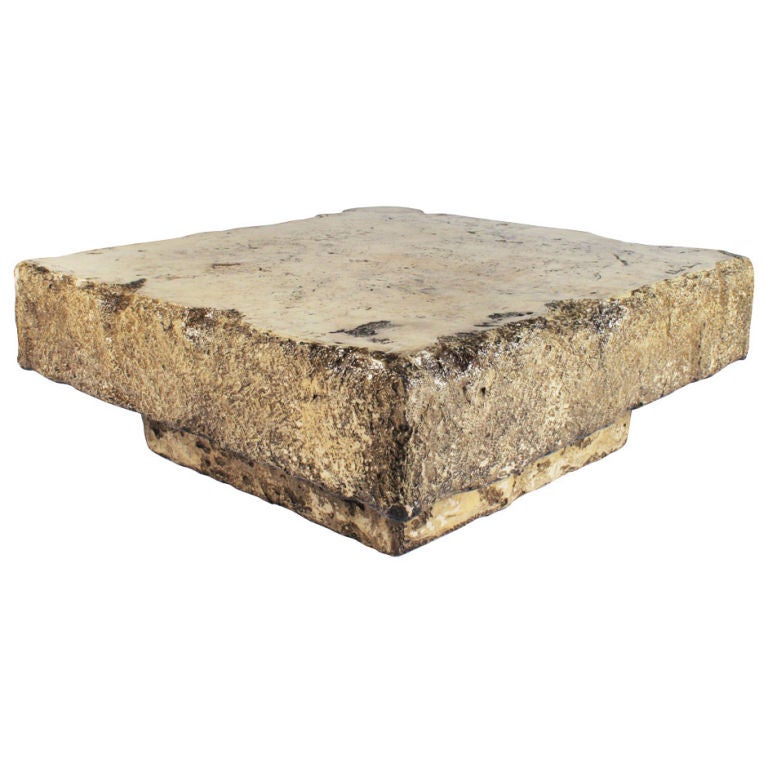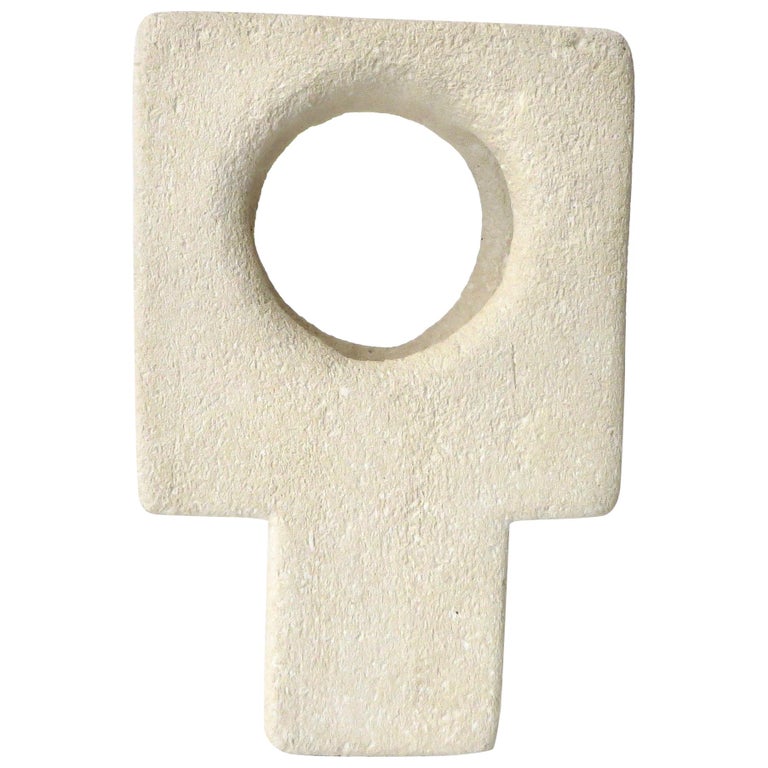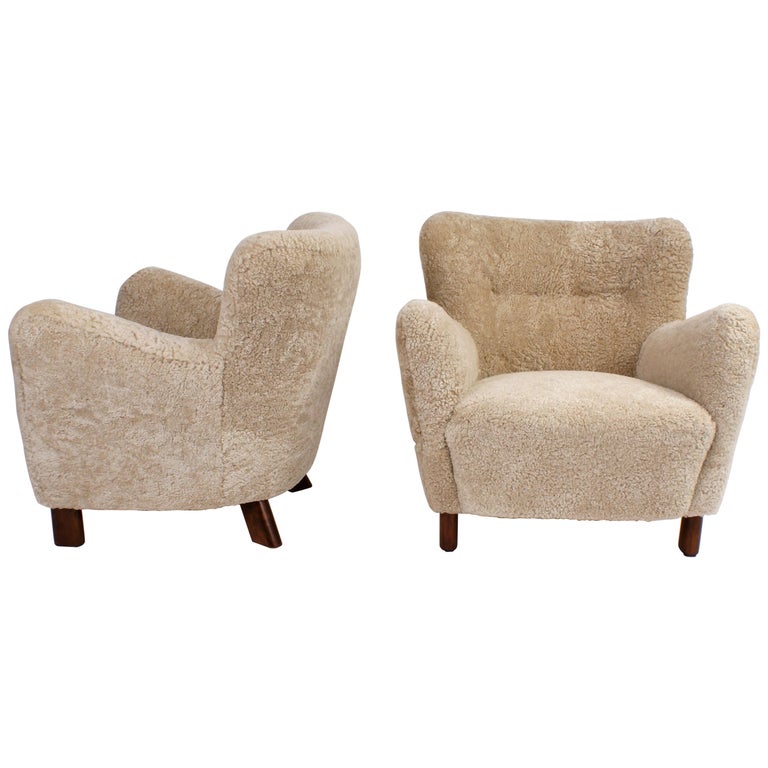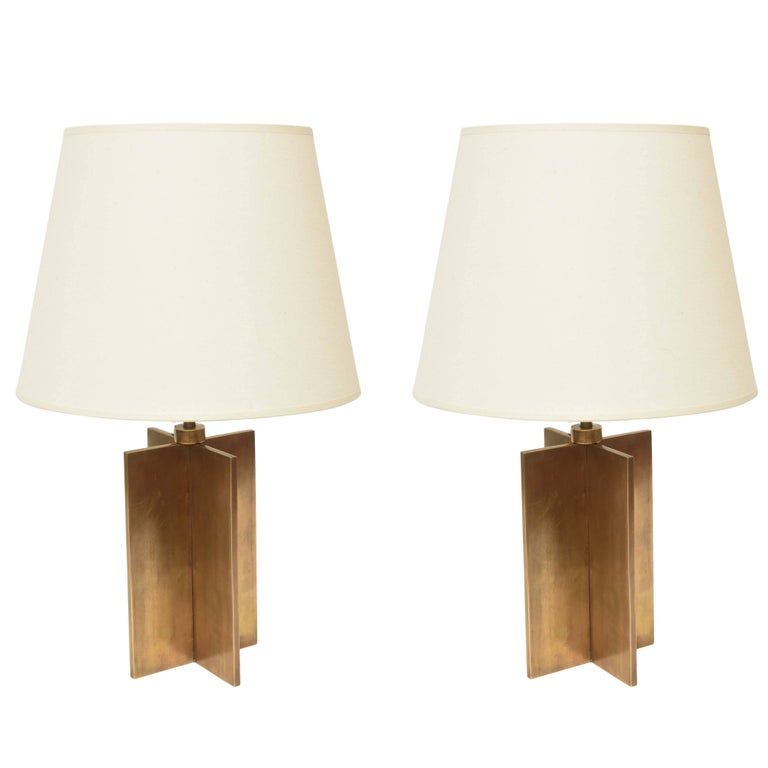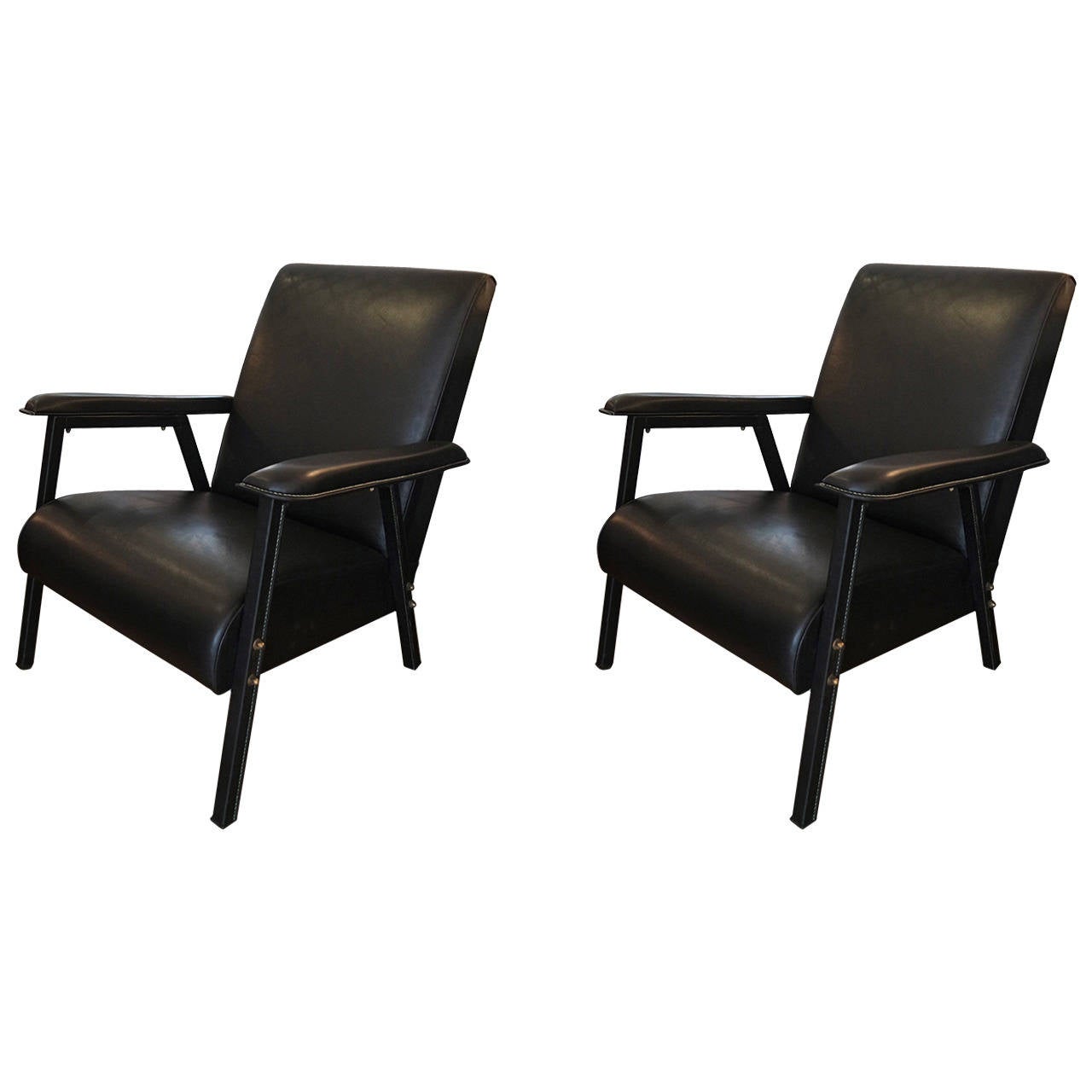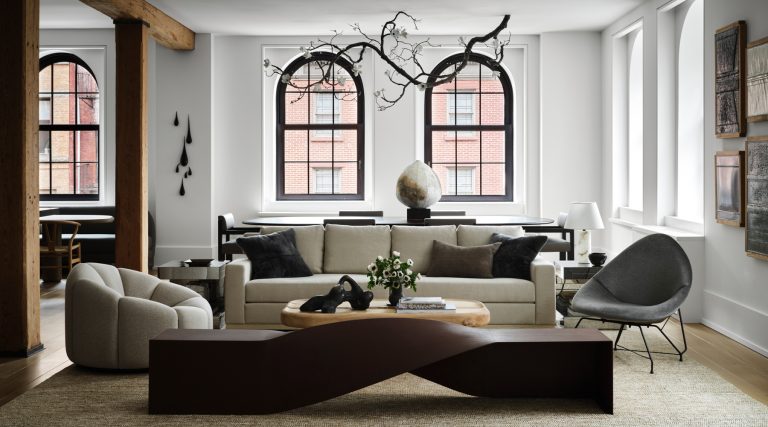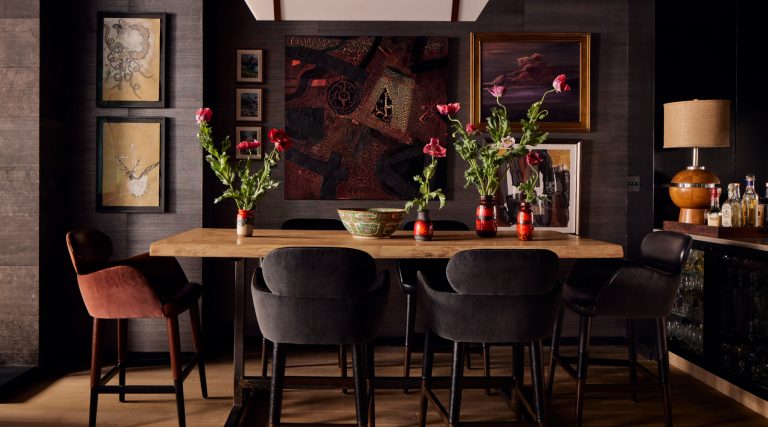
March 31, 2019Born in Johannesburg, Harvard-educated architect Clive Lonstein (top) held senior design positions at Studio Sofield and Tiffany & Co. before founding his own New York–based studio three years ago. Above: Renderings of a new 15-unit Manhattan residential development Lonstein is designing. Photos by Francesco Lagnese
As the former design director of Studio Sofield, one of Manhattan’s leading interiors firms, he helped infuse a seductive mix of glamour and refinement into retail shops for such fashion icons as Gucci and Tom Ford. Then, as a vice president at Tiffany & Co. in charge of the design and architecture department, he brought a distinctive personality to jewelry boutiques around the globe. Now, as the head of his own eponymous practice, he’s conjuring interior design magic for a discreet, elite clientele in New York and Aspen, and he’s just put the finishing touches on a new terminal for Seattle’s Paine Field airport whose interiors are so suave you wouldn’t mind a flight delay. Altogether, Clive Lonstein is probably the most accomplished architect you’ve never heard of. And as far as the New York–based Lonstein is concerned, that’s okay — in fact, it’s just the way he likes it. “I’m not posting on Instagram every two minutes,” he says. “I’m more restrained and private.”
He is also driven, having figured out at an early age, when he began to draw and paint, that he would have a career in the design field. “As a kid,” he recalls, “I loved this idea of creating an environment and stepping into a different world.” Lonstein was born and raised in sprawling Johannesburg, South Africa’s largest city, where he was exposed to “a mix of different cultures and influences,” he says. “There are so many different stimuli.” That helps explain his cosmopolitan sophistication. His family, which had long wanted to leave South Africa, with its apartheid regime, moved to Miami in 1990. Lonstein earned his undergraduate degree in architecture and art at the University of Miami, then headed to Harvard’s Graduate School of Design, where he got his master’s degree in architecture. All the while, he continued to paint, an avocation that — although paused right now as he pursues his career — informs his alluring, albeit generally neutral, palettes. “My work tends to be both technical and artistic,” he says. “I like strong contrasts — strong contrasts create tension.”

A material and inspiration board for a forthcoming project in Aspen, Colorado, includes a George Nakashima bench. Photo by Francesco Lagnese
Lonstein’s first job out of grad school was a plum one: working for William Sofield just as the designer, who would go on to win the prestigious Cooper Hewitt National Design Award, was launching his New York firm. For the next 13 years, Lonstein honed his aesthetic while collaborating with Sofield on diverse projects, including fashion boutiques like Ford’s, where he transformed the sales floors into what looked and felt like sexy living rooms.
For five years, beginning in 2010, Lonstein served as head of Tiffany’s in-house architecture and design studio, creating tailored retail spaces throughout Europe and Asia, each a unique manifestation of the classic brand adapted to its specific surroundings. In 2016, he established his own practice, which he now runs with a team of seven. Situated on a light-filled floor in New York’s fabled Cable Building — designed in the early 1890s by McKim, Mead & White to house the offices and massive steam engines and winches of the city’s cable-car system — the studio presents Lonstein’s aesthetic in its purest form and serves as a good representation of his elegantly understated style. The space has its original wood floors (obsessively refinished more than once at Lonstein’s insistence until they acquired just the right patina) and features espresso-colored accent walls, a pair of custom-made armchairs upholstered in sumptuous perforated leather and a coffee table by the Brooklyn ceramist Peter Lane that resembles weathered bark.

In the living room of a completed Aspen home, Edward Wormley side tables flank a custom sofa, and a Danish lounge chair sits at one end of a cork Paul Frankl coffee table. Photo by Rodolfo Martinez

Green woven-leather Jean-Michel Frank–inspired chairs surround a custom green lacquer, bronze inlay and walnut table in the dining room of the Aspen residence. The hand-blown chandelier is also bespoke. On the back wall hangs a work by Jean-Michel Basquiat. Photo by Rodolfo Martinez
Although just three years old, the studio has tackled residential commissions of a most impressive variety. Among them is the stylish makeover of a 1990s house in Aspen’s West End district. The project, says Lonstein, “is so much about texture and palette — I was awestruck by the natural beauty of the area and wanted to bring warmth into the home.” After a gut renovation in which walls were moved, the master suite enlarged and any vestiges of the house’s original stark industrial vibe erased, Lonstein swathed the interiors in rich, earthy hues with an inviting, tactile feel. The dining room is a study in deep green, from the custom-designed lacquer and walnut table surrounded by chairs covered in woven leather to the curtains in verdant Loro Piana silk. In the living room, seating upholstered in nubby neutral fabrics and cowhide is joined by blue-chip vintage pieces by Paul Frankl and Edward Wormley. Thanks to word of mouth about this project, two more home renovations are currently in the works in the Rocky Mountain enclave.
A family’s four-bedroom apartment in a prewar building on Manhattan’s Upper East Side demanded an even more dramatic makeover. For that project, Lonstein did away with the fusty interiors, which included arched doorways, yellowed walls and endless chintz upholstery, before crafting his own vision of stylish contemporary family living. He established an urbane tone at the entrance with a cabinet of his own design lacquered in a dazzling deep blue. The living room features a sofa upholstered in silvery velvet, chairs covered in wool bouclé, a bronze cocktail table by Silas Seandel and cabinets lacquered in a zigzag skyline pattern of Lonstein’s design. “They wanted stronger colors than I would have preferred,” Lonstein says, “but I got them to tone it down. It’s not bad if there are things that are colorful, just not too much of it. I definitely prefer neutrals.” (He jokes that the soft moss green of a swatch of dyed sheepskin in his office is about as vivid as he likes to get.)
Lonstein’s public designs evoke a supremely tranquil residential look that, in its layered detail, has much in common with the quietly stunning interiors he so adeptly conceives for the home — although there, he says, “you’re creating an authentic environment and you can go into much greater detail.” For Paine Field’s new 30,000-square-foot airport terminal, on the outskirts of Seattle, the architect designed a clean-lined yet inviting space, adding warmth by employing textural materials like a hand-carved limestone fireplace surround, antiqued granite flooring and a stone-top bar, along with wool- and leather-upholstered Jean Prouvé seating from Vitra paired with custom-made walnut side tables in the waiting area. The resulting relaxing, library-lounge, cocktail-hour vibe “may just make this the U.S’s best new airport,” according to a recent CNN story. “It’s the Tom Ford influence,” Lonstein says of the design, adding, “It was exciting to give the mundane idea of travel a really elevated experience.

Left: Lonstein designed an electric-blue straw-marquetry, lacquer and bronze console for the entry of a four-bedroom apartment in a prewar building on Manhattan’s Upper East Side. For the gold ceiling motif, he took inspiration from Émile-Jacques Ruhlmann. Right: In the living room, a Silas Seandal coffee table keeps company with a Danish lounge chair, a custom two-toned silk-mohair sofa, a Murano glass table lamp and a lacquered cabinet whose black-and-white design uses the art of Victor Vasarely as a jumping off point. Photos by Rodolfo Martinez
“I’m interested in things having a timeless quality,” he continues. “It’s important that design doesn’t look dated. If the proportions are correct, they stand the test of time.”
Lonstein credits Judaism for his desire to create inviting spaces. “It’s a big part of my life,” he says. “I’m inspired by the idea of Abraham’s tent that was open to everybody. I want homes to be hospitable, and well designed for entertaining. I think about the excitement people will feel when they walk into a home that’s a real environment. It’s a gracious way of living.”
